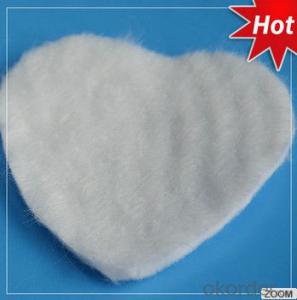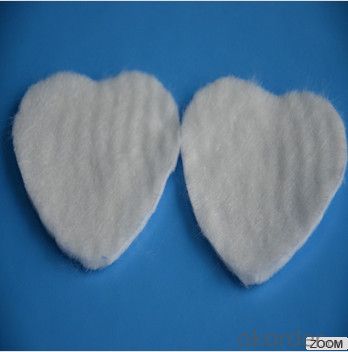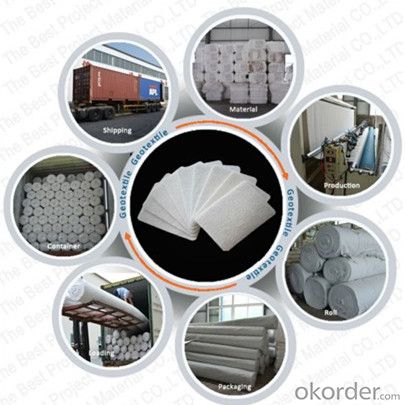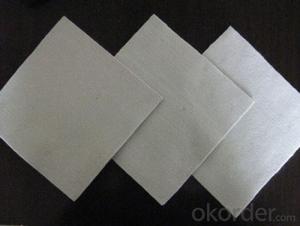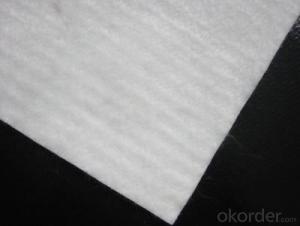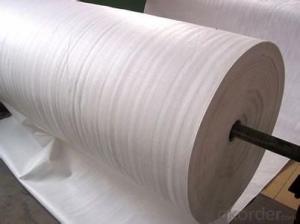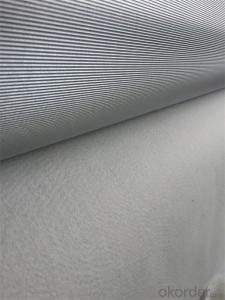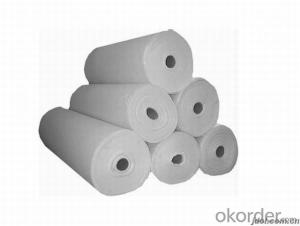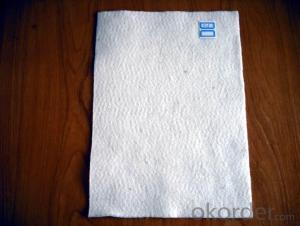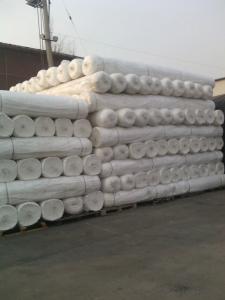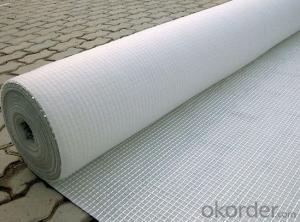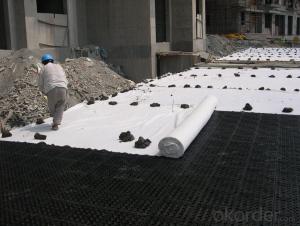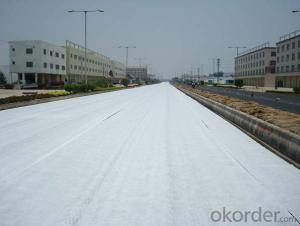Texel Geotextile Specifications of Synthetic Staple Fiber Needle Punched Nonwoven Geotextiles
- Loading Port:
- Qingdao
- Payment Terms:
- TT OR LC
- Min Order Qty:
- 20000 m²
- Supply Capability:
- 1500000 m²/month
OKorder Service Pledge
OKorder Financial Service
You Might Also Like
Specifications of Synthetic Staple Fiber Needle Punched Nonwoven Geotextiles:
material:PET fiber
weight:100g/m2-1000g/m2
width:1m,2m,3m,6m
length:30m-100m
color:white nonwoven geotextiles
Application of Synthetic Staple Fiber Needle Punched Nonwoven Geotextiles:
Filtration:
It can be the filtration layer of the dykes, river canal, seacoast, concrete slope, retaining walls. At the same time of preventing the clay granule from passing, it allows the water and the gas pass through freely.
Separation:
The isolation of the railway dregs and the roadbed, roadbed and the soft base, surface of the airdrome and parking lot and the groundsill, different dam materials. It isolates the soil and the gravel of two kinds different granule pathway from the groundsill or other buildings.
Reinforcement:
The highway, railway, soil-stone dam, breakwater, airport, backfill soil of retaining wall, slope protection, etc in which distributes the earth stress, prevents the side-displacement of the earth body and improves the earthbody stability.
Protection:
It prevents the bank from being washed out, protects the bank and the
bottom, prevents the water and soil from being washed away
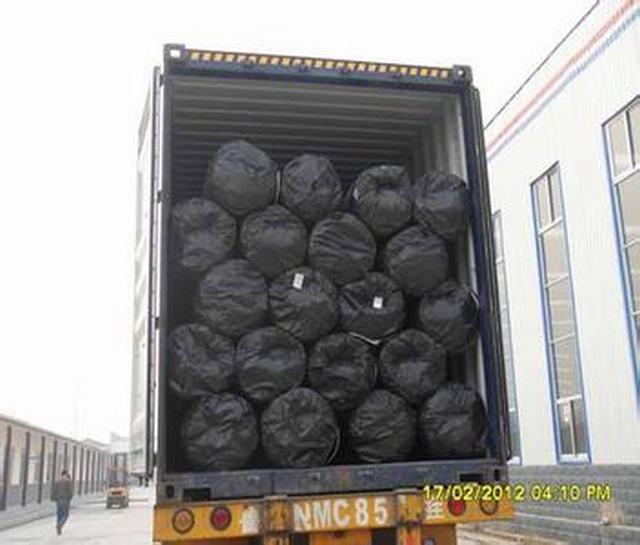
- Q: How do geotextiles help with reinforcement of embankments?
- Geotextiles help with reinforcement of embankments by providing stability and preventing erosion. They act as a barrier against soil movement, distributing the load and reducing the potential for settlement. Geotextiles also allow for water drainage, preventing water buildup and maintaining the embankment's structural integrity.
- Q: We have built a swingset with a built in sandbox. I am looking for geotextile fabric to put under the sandbox to keep weeds & roots out. Any ideas where I can get this from? Local home improvement stores do not stock geotextile fabric. I bought some from a pool supply store for my pool bottom, but they don't sell custom sizes.
- Buy Geotextile Fabric
- Q: Can geotextiles be used in waste containment systems?
- Yes, geotextiles can be used in waste containment systems. Geotextiles are commonly used as liners or covers in landfill sites to prevent the migration of hazardous substances into the surrounding environment. They provide a barrier to contain waste materials, prevent erosion, and promote filtration and drainage.
- Q: What are the applications of geotextiles in civil engineering?
- Geotextiles have a wide range of applications in civil engineering. They are commonly used in road construction, where they provide reinforcement and stabilization to the soil, preventing the formation of cracks and potholes. Geotextiles are also used in the construction of embankments and retaining walls, where they provide erosion control and improve soil stability. Additionally, they are used in drainage systems to filter out fine particles and prevent clogging. Overall, geotextiles play a crucial role in enhancing the performance and durability of various civil engineering structures.
- Q: Can geotextiles be used for reinforcement of paved surfaces?
- Yes, geotextiles can be used for the reinforcement of paved surfaces. Geotextiles are commonly deployed underneath the asphalt or concrete layers of paved surfaces to enhance their strength, stability, and durability. They help distribute the load over a larger area, prevent cracking and rutting, and control the growth of vegetation. Additionally, geotextiles can minimize the potential for reflective cracking and provide separation between different layers, enhancing the overall performance of paved surfaces.
- Q: What is the geotextile material?
- Geotextile is made of staple fiber polyester, polypropylene, polyester filament, PP flat silk and other synthetic fibers through acupuncture or weaving made of geotextile, non-woven and industrial non-woven products in one. The general width of 1-6 meters, roll length of 50-100 meters, the quality per unit area of 100-600 grams square meters. According to the different production processes are: polyester / polypropylene staple acupuncture geotextile, PP flat wire woven geotextile, polyester spunbond filament geotextile, single double-sided thermal composite impermeable geotextile, woven geotextile and so on.
- Q: What are the different geotextile testing parameters?
- There are several different geotextile testing parameters that are used to evaluate the performance and quality of geotextiles. Some of the common parameters include tensile strength, puncture resistance, tear strength, permeability, apparent opening size, and UV resistance. These tests help determine the suitability of geotextiles for specific applications and ensure their durability and effectiveness in various geotechnical and civil engineering projects.
- Q: Manufacture of geotextile machinery
- Non-woven needle machine, I am specializing in the production of geotextiles
- Q: How do geotextiles aid in the reduction of lateral spreading?
- Geotextiles aid in the reduction of lateral spreading by providing a barrier against soil movement and erosion. They are placed horizontally between layers of soil, acting as a stabilizing agent by distributing the lateral forces and restricting the movement of soil particles. This helps to prevent the lateral spreading of soil and enhances the overall stability of slopes, embankments, and other geotechnical structures.
- Q: How are geotextiles affected by mechanical stress?
- Geotextiles are significantly affected by mechanical stress as they undergo deformation and potential damage due to external forces or loads. The stress can cause the geotextile to stretch, tear, or even rupture, affecting its overall performance and functionality. Therefore, it is essential to consider the mechanical stress factors when designing or implementing geotextile applications to ensure their long-term durability and effectiveness.
Send your message to us
Texel Geotextile Specifications of Synthetic Staple Fiber Needle Punched Nonwoven Geotextiles
- Loading Port:
- Qingdao
- Payment Terms:
- TT OR LC
- Min Order Qty:
- 20000 m²
- Supply Capability:
- 1500000 m²/month
OKorder Service Pledge
OKorder Financial Service
Similar products
Hot products
Hot Searches
Related keywords
